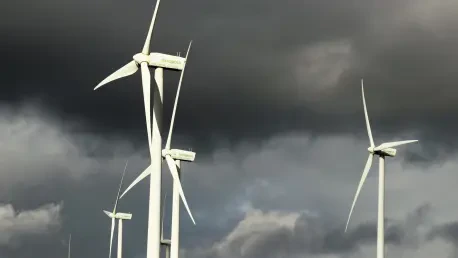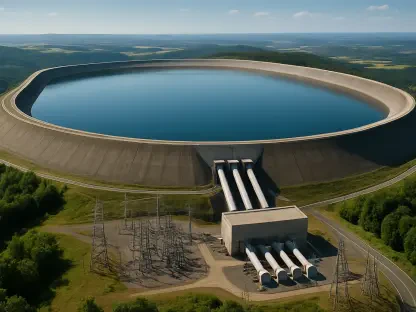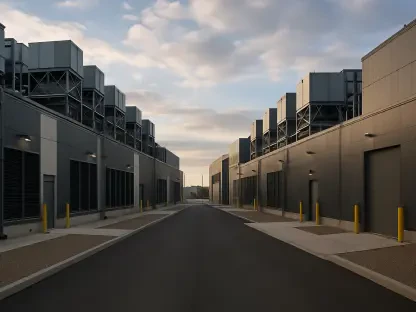In the fast-evolving world of renewable energy, Christopher Hailstone stands out as a seasoned expert, particularly in energy management and electricity delivery. Today, he sheds light on the complexities surrounding the Empire Wind 1 project—an ambitious endeavor aiming to power 500,000 homes in New York. This conversation delves into the reasons behind the project’s initial halt, the factors that influenced its resumption, and the broader implications for future developments.
Can you share the initial reasons behind the stop work order issued in April for the Empire Wind 1 project?
The stop work order stemmed from concerns that the project lacked sufficient analysis and inter-agency consultation. The administration felt that the approval process was expedited without fully evaluating potential environmental impacts. This led to a requirement for further review to address these deficiencies before construction could proceed.
What factors contributed to the decision to lift the stop work order on Empire Wind 1?
Strong advocacy and collaboration between various stakeholders played a critical role. New York Gov. Kathy Hochul and key political figures engaged in constructive dialogue with the administration to resolve concerns. This collaboration helped in aligning the project’s objectives with regulatory standards, ultimately leading to the continuation of construction.
How did the conversations with New York Gov. Kathy Hochul and Interior Secretary Doug Burgum influence the decision to resume construction?
Governor Hochul’s discussions emphasized her commitment to enhancing the state’s energy infrastructure, including pipeline capacity. By addressing specific logistical and regulatory challenges, particularly in terms of natural gas pipelines, these conversations helped present a unified front that reassured the administration of the project’s viability.
Can you elaborate on the role of pipeline capacity in the discussions surrounding the project?
Pipeline capacity is pivotal for ensuring reliable energy supply. The project’s success partly hinges on addressing existing constraints in the pipeline infrastructure. Dialogue about improving this capacity underscored the state’s resolve to support large-scale renewable projects by ensuring they integrate smoothly with current energy systems.
What are the key economic considerations Equinor will assess in the updated assessment of the project?
Equinor plans to re-evaluate the financial landscape, considering variables such as market dynamics, cost implications of the stoppage, and the broader economic environment. This assessment will guide decisions on investments and project strategy moving forward.
How will the project team address the impact of the stoppage on the timeline and budget?
The team is keen on minimizing delays and budget overruns by working closely with suppliers and regulatory bodies. By streamlining processes and optimizing resource allocation, they aim to stay as close to the original timeline and budget as feasible.
Could you detail the planned activities during the offshore installation window in 2025?
During this period, the project will focus on setting up the essential infrastructure offshore, including the installation of turbines and other critical components. This stage is crucial, as it lays the groundwork for ensuring that the project can proceed to its operational phase on schedule.
What steps are being taken to ensure that the Empire Wind 1 project reaches its planned commercial operation date in 2027?
Efforts are concentrated on mitigating any further disruptions by refining project management practices and ensuring compliance with all regulatory requirements. Equinor is also strengthening its collaboration with local authorities and stakeholders to maintain momentum toward the 2027 operational target.
What were the primary concerns raised by the Trump administration regarding the project’s initial approval process?
The administration highlighted a lack of thorough analysis and inter-agency consultation. It was felt that these steps were crucial for fully understanding the project’s potential impacts, which had not been comprehensively addressed during the earlier approval process.
How has Equinor worked to resolve the deficiencies identified by the Bureau of Ocean Energy Management?
Equinor has taken a proactive approach by engaging in extensive environmental assessments and consultations with relevant agencies. These efforts are aimed at ensuring all potential impacts are considered, thereby strengthening the foundation for moving forward with construction.
What has been the response from key stakeholders, including labor groups and New York lawmakers, on lifting the stop work order?
There has been a strong positive reaction, with stakeholders expressing support for the project’s continuation. Labor groups and lawmakers have reiterated their commitment to advancing renewable energy initiatives that also promise significant economic benefits for the region.
How confident is Equinor in the project’s ability to supply energy to 500,000 homes in New York?
Equinor remains optimistic about meeting its targets, backed by a robust development plan and strategic partnerships. They are leveraging cutting-edge technology and expertise to ensure the project delivers on its promise to supply clean energy to a substantial number of homes.
Can you comment on Equinor’s consideration of legal action during the stoppage period?
While legal action was on the table, Equinor prioritized communication and negotiation to resolve the issues at hand. Open lines of dialogue with governmental bodies proved more effective in bridging differences and moving the project forward.
What lessons has Equinor learned from this experience, and how will it influence future project developments?
This experience has underscored the importance of comprehensive planning and stakeholder engagement from the outset. Equinor intends to apply these lessons by enhancing their due diligence processes and fostering stronger partnerships with governmental and community stakeholders to ensure future projects face fewer hurdles and are aligned with all statutory requirements.









